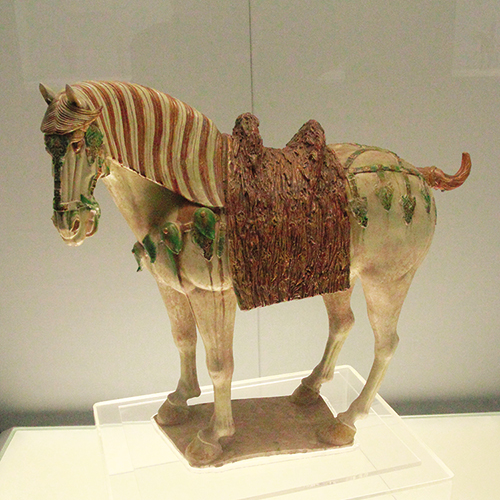
A Tang Dynasty glazed pottery horse from the collection of the Shanghai Museum (Zhangzhugang / Doctoroftcm / CC BY-SA 3.0 DEED)
With a dynamic history that spans the Neolithic period to the modern age, Chinese civilization has produced some of the world’s most remarkable artistic creations. Robert DeCaroli, a professor in the department of history and art history at George Mason University, examines how shifts in China’s social, religious, and political life have influenced transformations in its material culture.
August 1 Origins of Chinese Culture
DeCaroli explores the beginnings of Chinese civilization through the ceramics, bronzes, jades, and other artifacts revealed through archaeological digs. He examines the objects and ideas that characterize China’s earliest periods, from the Neolithic era to the Zhou dynasty.
August 8 Foundations of the Chinese Imperial System
Delving into the spectacular art and architecture of China’s early and occasionally fractious dynasties, DeCaroli focuses on the time from China’s first emperor in the Qin to the birth of the Confucian state in the Han to the arrival of Buddhism in the Northern Wei. The political philosophies and religious ideas that most inspired the works are considered.
August 15 China and the Outside World
Trade and expansion during the Tang dynasty brought new wealth, new customs, and new ideas. After centuries of Han dynasties, two non-Han dynasties emerged: the Jin (ethnically Jurchen) and the Yuan (ethnically Mongol). Their rise moved China further into contact with the wider world. Export goods such as porcelain and silk continued to be produced, as indigenous painting traditions among the literati and court artists flourished.
August 22 From the Forbidden City to the People’s Republic
As the Ming dynasty closed its northern borders with the Great Wall and China explored the seas, the arts of the court continued to change and evolve. The decline of the Qing dynasty in the face of mounting foreign aggression paved the way for the end of the imperial system and the rise of the People’s Republic—and new forms of state-sponsored art.
4 sessions
World Art History Certificate core course: Earn 1 credit*
General Information
*Enrolled participants in the World Art History Certificate Program receive 1 core course credit. Not yet enrolled? Learn about the program, its benefits, and how to register here.